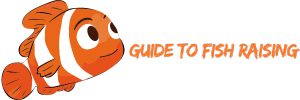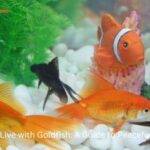Maintaining a clean and healthy aquarium can be a challenging task. Luckily, some fish species are natural tank cleaners and can help reduce the workload for aquarists. These fish not only contribute to the cleanliness of the tank but also add beauty and diversity to the aquatic environment.
In this comprehensive guide, Guide to Fish Raising will explore the benefits of having Fish That Clean Tanks, discuss various species known for their cleaning abilities, and provide tips for maintaining a balanced and healthy aquarium.
Table of contents
ToggleBenefits of Having Fish That Clean Tanks
Before delving into specific fish species, it’s important to understand the benefits of including Fish That Clean Tanks in your aquarium:
Algae Control
Many tank-cleaning fish feed on algae, helping to keep the glass, decorations, and substrate free from unsightly green or brown growths. This can be especially beneficial in tanks with high light levels or nutrient-rich water, which can promote algae growth.
Waste Reduction
Some species, such as scavengers and bottom-dwellers, consume uneaten food and organic debris that settle on the substrate. This helps prevent the buildup of waste, reducing the risk of water quality issues and maintaining a healthier environment for all tank inhabitants.
Aesthetic Appeal
Tank-cleaning fish come in various shapes, sizes, and colors, adding visual interest to the aquarium. Their unique behaviors, such as grazing on algae or sifting through the substrate, can be fascinating to watch.
Ecological Balance
Including tank-cleaning fish can help establish a more balanced and self-sustaining ecosystem within the aquarium. By performing their natural cleaning behaviors, these fish contribute to the overall health and stability of the tank.
Popular Fish That Clean Tanks Species
1. Siamese Algae Eater (Crossocheilus oblongus)
The Siamese algae eater is a popular choice for controlling algae growth in freshwater aquariums.
Habitat and Behavior: Native to Southeast Asia, Siamese algae eaters thrive in tanks with plenty of plants and hiding spots. They are peaceful and can coexist with a variety of other fish species.
Diet: These fish primarily feed on algae, but they will also consume leftover fish food and detritus.
Tank Requirements: They prefer a tank with at least 20 gallons of water, a temperature range of 75-79°F, and a pH of 6.5-7.5.
Considerations: Siamese algae eaters can grow up to 6 inches in length, so adequate space is necessary. They are best kept in groups of three or more to reduce stress and promote natural behavior.
2. Otocinclus Catfish (Otocinclus spp.)
Otocinclus catfish, commonly known as “Otos,” are small, peaceful fish that are excellent algae eaters.
Habitat and Behavior: Native to South America, Otos prefer densely planted tanks with plenty of hiding spots. They are social fish and should be kept in groups of at least six.
Diet: Otos primarily consume algae but can also be fed algae wafers and blanched vegetables.
Tank Requirements: They thrive in tanks with at least 10 gallons of water, a temperature range of 72-78°F, and a pH of 6.8-7.5.
Considerations: Otos are sensitive to changes in water quality, so regular maintenance and stable water parameters are crucial. They should not be housed with aggressive tank mates.
3. Bristlenose Pleco (Ancistrus spp.)
Bristlenose plecos are popular for their algae-eating capabilities and unique appearance.
Habitat and Behavior: Native to South America, bristlenose plecos prefer tanks with plenty of hiding spots and driftwood. They are generally peaceful and can be kept with a variety of tank mates.
Diet: These plecos feed on algae, but they also require a varied diet that includes sinking pellets, algae wafers, and blanched vegetables.
Tank Requirements: They need a tank with at least 20 gallons of water, a temperature range of 73-81°F, and a pH of 6.5-7.5.
Considerations: Bristlenose plecos can grow up to 5 inches in length, so adequate space is necessary. They are prolific breeders, so be prepared for potential offspring.
4. Amano Shrimp (Caridina multidentata)
Amano shrimp are small, peaceful invertebrates known for their effective algae-eating abilities.
Habitat and Behavior: Native to Japan, Amano shrimp thrive in well-planted tanks with plenty of hiding spots. They are social and should be kept in groups.
Diet: Amano shrimp primarily feed on algae, biofilm, and detritus. They can also be supplemented with algae wafers and blanched vegetables.
Tank Requirements: They require a tank with at least 10 gallons of water, a temperature range of 70-78°F, and a pH of 6.5-7.5.
Considerations: Amano shrimp are sensitive to water quality, so regular maintenance and stable water parameters are essential. They should not be housed with aggressive or large fish that may prey on them.
5. Corydoras Catfish (Corydoras spp.)
Corydoras catfish, or “Cories,” are small, bottom-dwelling fish that help keep the substrate clean.
Habitat and Behavior: Native to South America, Cories prefer tanks with soft substrate and plenty of hiding spots. They are social and should be kept in groups of at least six.
Diet: Cories are omnivores and feed on leftover food, detritus, and sinking pellets.
Tank Requirements: They thrive in tanks with at least 15 gallons of water, a temperature range of 72-78°F, and a pH of 6.5-7.5.
Considerations: Cories are peaceful and should be housed with non-aggressive tank mates. They are sensitive to poor water quality, so regular maintenance is crucial.
6. Nerite Snails (Neritina spp.)
Nerite snails are known for their algae-eating abilities and unique shell patterns.
Habitat and Behavior: Native to various regions, including Africa and Asia, Nerite snails thrive in freshwater and brackish tanks. They are peaceful and can be kept with a variety of tank mates.
Diet: Nerite snails primarily feed on algae but can also consume biofilm and detritus.
Tank Requirements: They require a tank with at least 5 gallons of water, a temperature range of 72-78°F, and a pH of 7.0-8.0.
Considerations: Nerite snails cannot reproduce in freshwater, so there is no risk of overpopulation. They are sensitive to poor water quality and require calcium for shell health.
7. Siamese Flying Fox (Epalzeorhynchos kalopterus)
The Siamese flying fox is an active and effective algae eater.
Habitat and Behavior: Native to Southeast Asia, they prefer tanks with plenty of swimming space and hiding spots. They can be semi-aggressive, so tank mates should be chosen carefully.
Diet: They feed on algae, biofilm, and plant matter, but also require a varied diet that includes sinking pellets and blanched vegetables.
Tank Requirements: They need a tank with at least 30 gallons of water, a temperature range of 75-79°F, and a pH of 6.5-7.5.
Considerations: Siamese flying foxes can grow up to 6 inches in length and may become territorial as they age. They should be housed with similarly sized, non-aggressive fish.
Choosing the Right Cleaner

Selecting the ideal cleaner fish for your aquarium involves considering various factors to ensure compatibility and effectiveness. Here are some key aspects
Tank
Larger Tanks: If you have a larger tank, you can accommodate larger fish such as Plecos. Common Plecos and Bristlenose Plecos are popular choices for their algae-eating capabilities and interesting appearance. However, it’s important to note that some Plecos can grow quite large, so be sure your tank is spacious enough to house them comfortably.
Smaller Tanks: For smaller tanks, species like Otocinclus or Corydoras are more suitable. Otocinclus catfish are excellent algae eaters for small tanks, while Corydoras catfish help keep the substrate clean by scavenging for uneaten food and debris. These smaller fish are perfect for tanks with limited space and require less maintenance than their larger counterparts.
Tankmates
Compatibility: When choosing cleaner fish, it’s crucial to ensure they are compatible with your existing tank inhabitants. Some cleaner fish, such as certain species of Plecos or loaches, can be aggressive or territorial. It’s important to research the temperament and behavior of potential cleaner fish to prevent conflicts and stress among your tank’s residents.
Community Tanks: In community tanks with a mix of different species, peaceful cleaner fish like Corydoras, Otocinclus, and Amano shrimp are generally good choices. These species are less likely to cause disturbances and can coexist harmoniously with a variety of other fish.
Algae Type
Specific Algae Eaters: Different types of algae require specific fish to effectively control them. For example, Otocinclus catfish excel at removing green algae, while Siamese Algae Eaters are known for their ability to tackle stubborn hair algae. Research the type of algae present in your tank to select the most effective cleaner fish.
Multi-Algae Approach: In tanks with multiple types of algae, a combination of different algae-eating fish may be necessary. This multi-algae approach ensures that various algae species are kept under control, contributing to a cleaner and healthier aquarium environment.
Personal Preference
Appearance and Behavior: The appearance and behavior of cleaner fish can vary widely. Some aquarists prefer the active nature of loaches, which are constantly on the move and can add dynamic activity to the tank. Others might admire the peaceful demeanor of Corydoras, which are gentle and social fish that often swim in groups.
Tank Aesthetics: Consider how the cleaner fish will contribute to the overall aesthetics of your tank. Fish like Amano shrimp and Nerite snails not only help with algae control but also add unique visual interest with their distinct appearances and behaviors.
Tips for Maintaining a Balanced and Healthy Aquarium
Including tank-cleaning fish can greatly assist in maintaining a clean and healthy aquarium, but it is essential to follow best practices to ensure the well-being of all tank inhabitants:
Regular Water Changes
Perform regular water changes (10-20% weekly) to remove waste and maintain water quality. Use a gravel vacuum to clean the substrate and remove uneaten food and debris.
Proper Filtration
Use a quality filter appropriate for the tank size to ensure adequate water circulation and filtration. Clean the filter media regularly to maintain its efficiency.
Avoid Overfeeding
Overfeeding can lead to excess waste and poor water quality. Feed only the amount your fish can consume in a few minutes and remove any uneaten food.
Monitor Water Parameters
Regularly test the water for key parameters, including ammonia, nitrite, nitrate, pH, and temperature. Maintaining stable water conditions is crucial for the health of your fish and invertebrates.
Provide a Varied Diet
Ensure your tank-cleaning fish receive a varied diet that meets their nutritional needs. Supplement algae eaters with algae wafers and blanched vegetables, and provide omnivores with a mix of sinking pellets and protein-rich foods.
Create a Suitable Habitat
Provide plenty of hiding spots and natural decorations, such as plants, rocks, and driftwood. This not only enhances the aesthetic appeal of the tank but also creates a more natural and comfortable environment for the fish.
Avoid Overcrowding
Overcrowding can lead to stress, aggression, and poor water quality. Research the space requirements and compatibility of each species before adding them to your tank.
Conclusion
Tank-cleaning fish play a valuable role in maintaining a clean and healthy aquarium. By selecting the right species and following best practices for tank maintenance, you can create a balanced and thriving aquatic environment. Remember that while Fish That Clean Tanks can assist with keeping the tank clean, regular maintenance and proper care are essential for the well-being of all tank inhabitants. By combining the efforts of your fish with diligent care, you can enjoy a beautiful and healthy aquarium for years to come.





